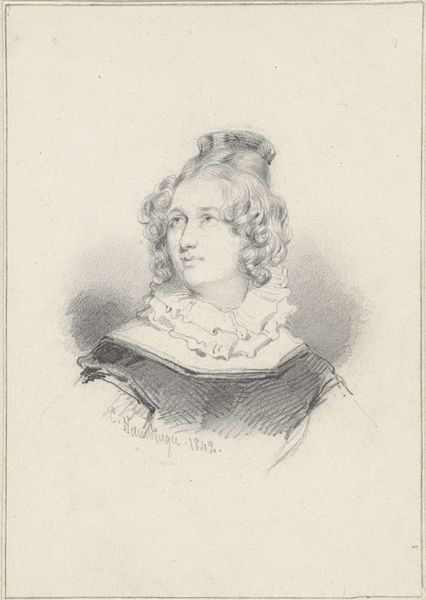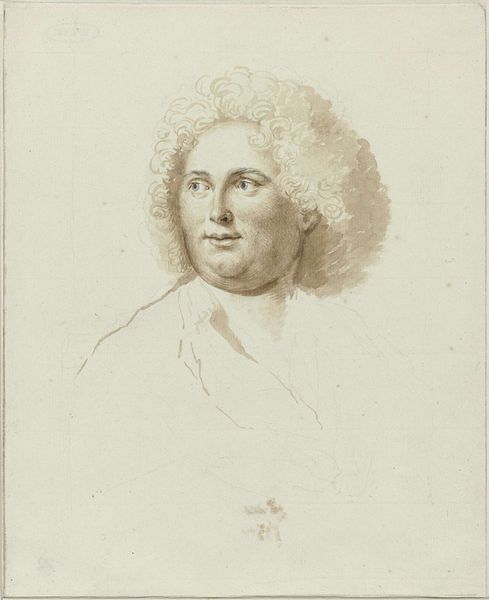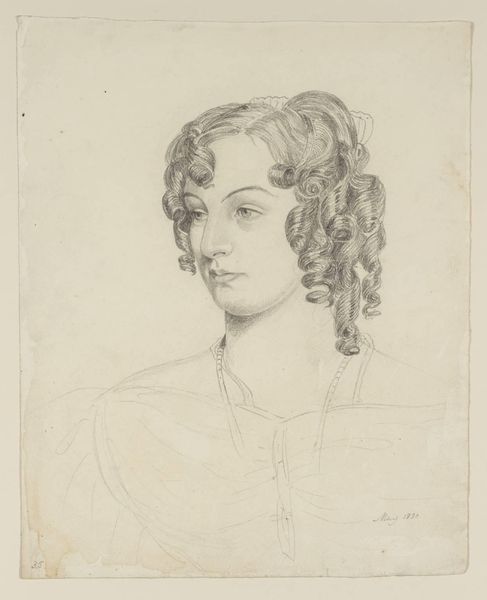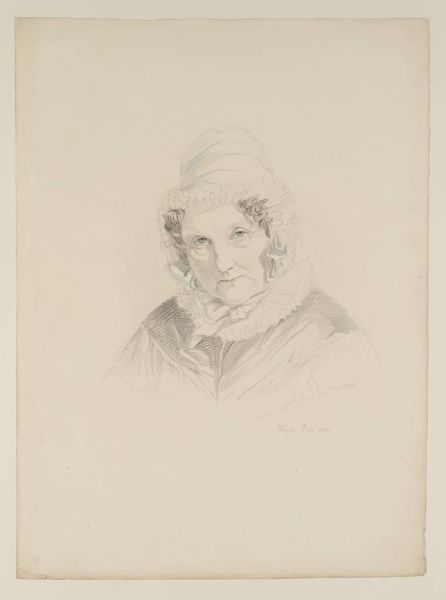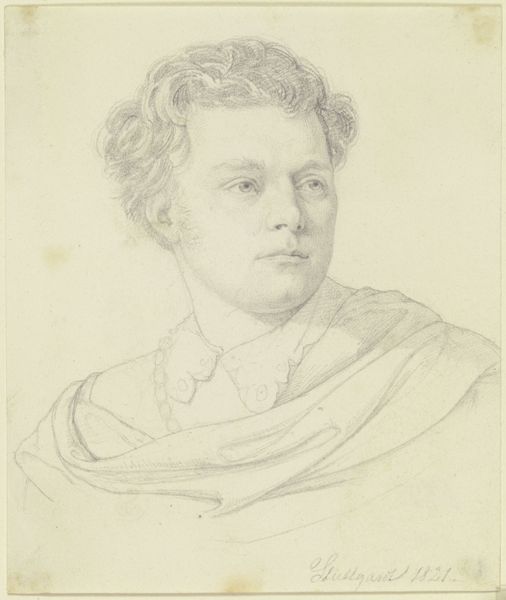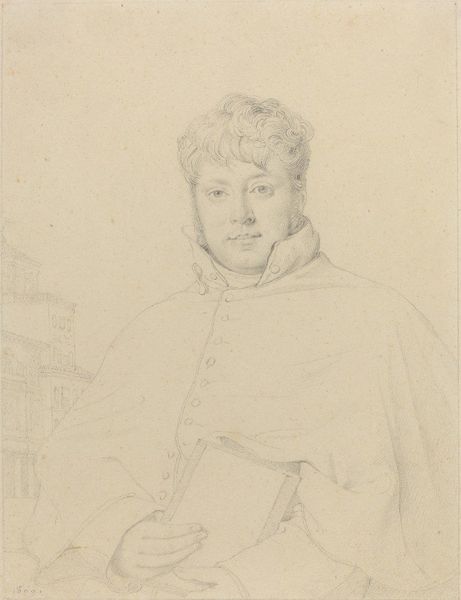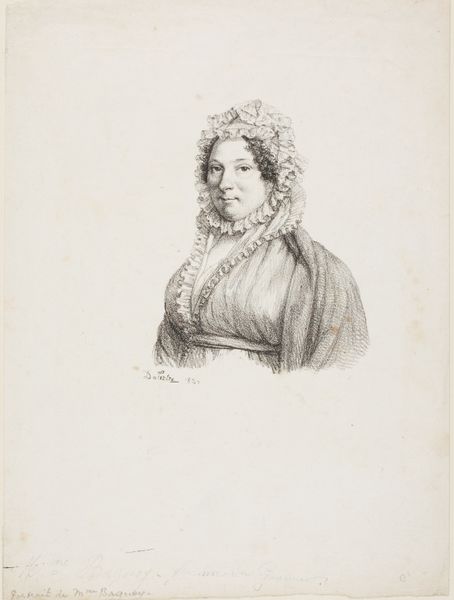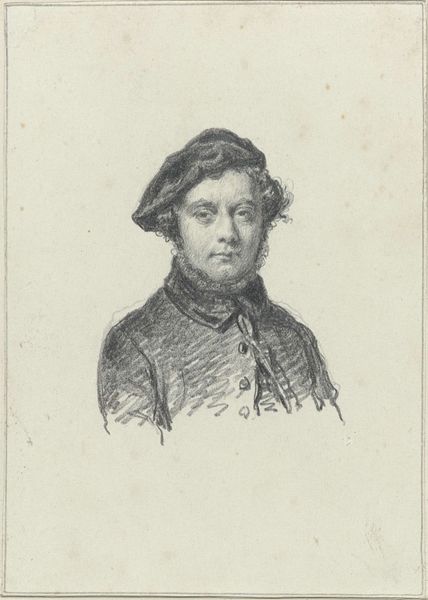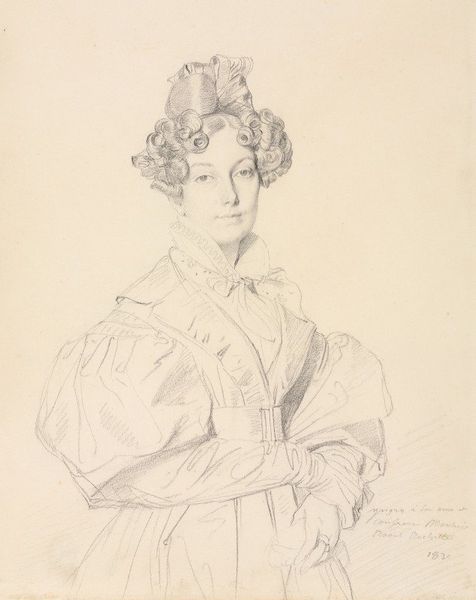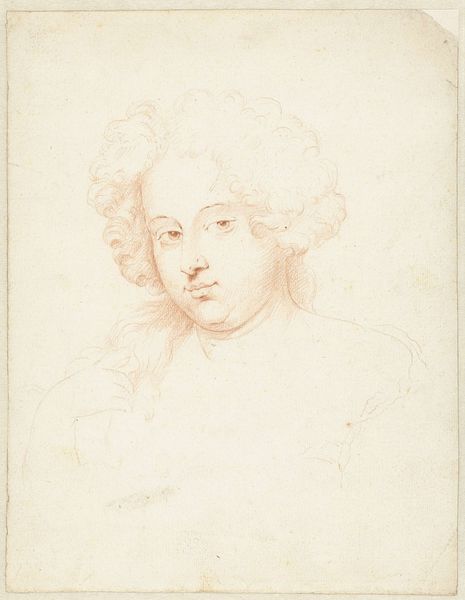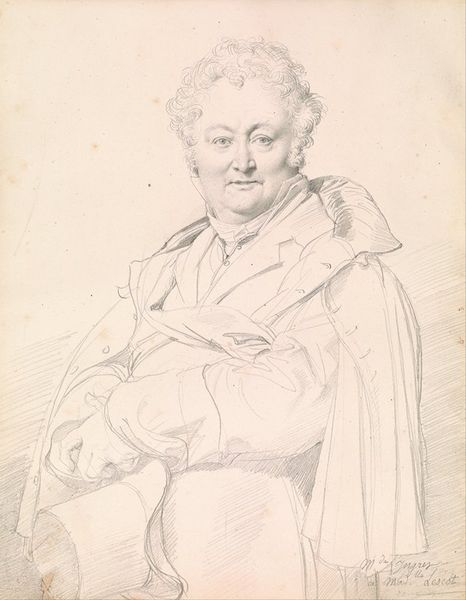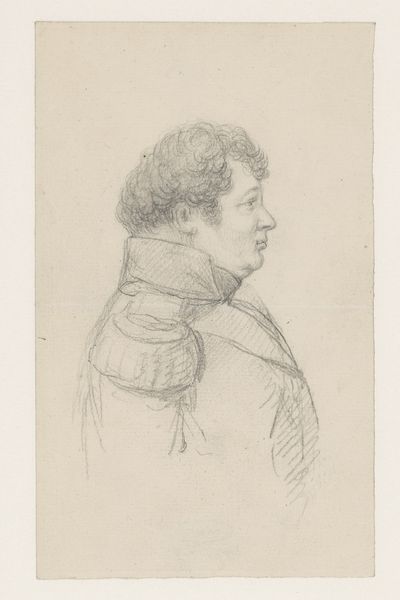![[title not known] by Elizabeth Rigby](/_next/image?url=https%3A%2F%2Fd2w8kbdekdi1gv.cloudfront.net%2FeyJidWNrZXQiOiAiYXJ0ZXJhLWltYWdlcy1idWNrZXQiLCAia2V5IjogImFydHdvcmtzLzQ0MzUzM2EwLWQwZjUtNDFhOC05OTgxLWM2Y2I4ZjJjYjQ0OS80NDM1MzNhMC1kMGY1LTQxYTgtOTk4MS1jNmNiOGYyY2I0NDlfZnVsbC5qcGciLCAiZWRpdHMiOiB7InJlc2l6ZSI6IHsid2lkdGgiOiAxOTIwLCAiaGVpZ2h0IjogMTkyMCwgImZpdCI6ICJpbnNpZGUifX19&w=2048&q=75)
Dimensions: support: 283 x 241 mm
Copyright: CC-BY-NC-ND 4.0 DEED, Photo: Tate
Curator: This drawing, held within the Tate Collections, is by Elizabeth Rigby, born in 1809. It captures a woman in fine detail. Editor: The precision is striking! The light is so delicate, especially around the lace, making the figure appear almost ethereal. Curator: Rigby’s process is key here. Consider the accessibility of drawing as a medium for a woman artist in the 19th century— it was cheaper and less demanding than painting. Editor: But look at how she uses line! The contrast between the tightly rendered curls and the almost sketched-in details of the dress creates a compelling visual tension. It's a sophisticated handling of form. Curator: Precisely. A woman making this kind of portrait was participating in the art world within the confines of what was socially acceptable, depicting women from a potentially female perspective. Editor: The interplay between detail and elision invites interpretation. I see both power and vulnerability in her gaze. Curator: And that's down to Rigby's mastery, turning a humble material into something so thought-provoking. Editor: Indeed, both technically impressive and emotionally resonant.
Comments
Join the conversation
Join millions of artists and users on Artera today and experience the ultimate creative platform.
tate 7 months ago
⋮
This work demonstrates the use of pencil for a finished portrait. Rigby has paid particular attention to the face and hair: the contrast between the darker rounded strokes for the ringlets and the lighter strokes for the face and bonnet throws the curls into relief. It is possible that a softer pencil was used for the curls. Despite Rigby's obvious talent for drawing, she chose to make a career out of journalism. A biography records that 'Literature was to be her vocation and career, but drawing her delight'. Gallery label, August 2004
